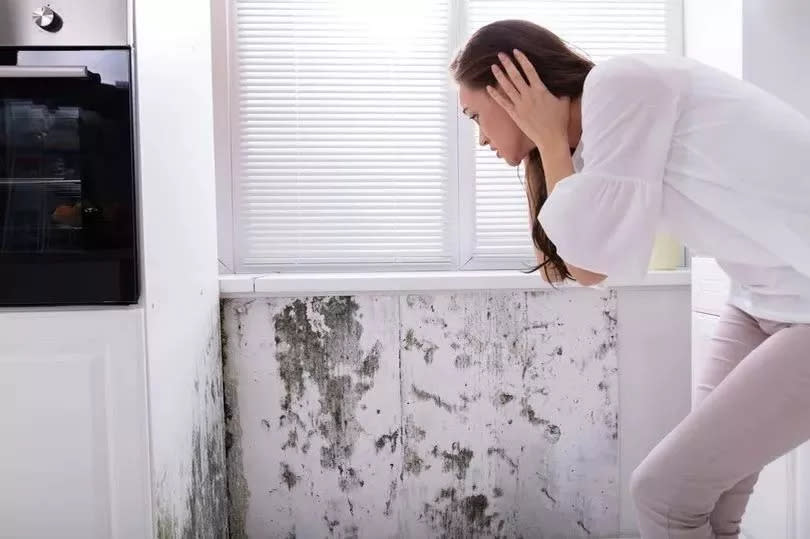Top tips to deal with spring mould caused by wet weather and rising temperatures

Spring - with its frequent showers and rising temperatures - can be a cause for concern for homeowners due to the potential growth and spread of mould in homes.
In fact, Google Trends data shows that online searches for 'how to clean mould' surged by 233 per cen in April.
With this in mind, thermal imaging experts at Tester.co.uk have shared five tips on how to identify and prevent the spread of mould, damp, and mildew.
READ MORE: 'I want a job... please give me a f*****g job'
1. Damp
According to a study by Utilita Energy, 20% of households regularly experience excessive condensation. Signs of damp include damaged wallpaper and discoloured plasterboard, while wet patches on walls can provide the perfect conditions for mould to grow.
To prevent dampness, residents can use thermal imaging cameras. These devices detect heat - or infrared and thermal energy - and highlight areas with excess moisture, reports Nottinghamshire Live.
They may find water behind walls and above rooflines, to name a couple of examples.
To reduce condensation and prevent it from forming, dwellers can take a few simple steps to remove excess moisture from their homes. This includes ventilating bathrooms after showering and kitchens after cooking, wiping windows to remove any condensation, heating the property and avoiding drying clothes inside. Dehumidifiers also work wonders to lower moisture levels inside a property.
2. Mould
Mould spores can develop within 24 hours when warm, moist air comes into contact with a cold surface, becoming visible and spreading throughout the home over the next 18-21 days. Easily recognisable due to its fuzzy black appearance, mould can also appear green or red and has a strong musty odour.
While unpleasant, Utilita Energy's study found that 24% of adults have found mould in their home at some point.
There are multiple health risks associated with mould. When living on a property with an infestation, dwellers may experience cold-like symptoms, such as coughing, sneezing, wheezing and nasal congestion. Mould spores can also exacerbate asthma and allergies, so acting quickly when noticing spores in a property is essential.
When wearing gloves, goggles and a mask, dwellers can remove the spores themselves by wiping the surface with professional mould removal liquid-or bleach diluted with water-before drying it with a cloth. If spores have touched any furnishings, clothes or cloths, they should be thrown away or professionally dry cleaned.
However, it is vital to ensure that the mould is a non-toxic strain caused by condensation rather than sewage or contaminated water before acting. Dwellers should also avoid mixing bleach with ammonia, acids or other cleaners, as this can release harmful, toxic fumes.
3. Mildew
If dampness in homes is not addressed, mildew may begin to grow. Defined as a type of fungus, mildew can be recognised by its grey, white or light brown colour.
It can swiftly damage fabrics and leave properties with a distinct, unpleasant smell.
Similar to mould, mildew can pose health risks to residents by triggering allergic reactions and respiratory problems. It can be eliminated from properties using professional cleaning products or a solution of bleach and water.
Alternatively, vinegar mixed with warm water can be used to wipe the affected area. However, whether dealing with black mould or red mildew, it's important to take safety precautions and seek professional advice if unsure.
Additionally, mildew can damage house plants by growing on the leaves, buds, petals, and shoots. This weakens the plants and may cause them to turn yellow or brown, as well as possibly drying them out completely.
To prevent mildew from killing plants, dwellers can spray the infestation with neem oil-a naturally occurring pesticide-or a combination of water, baking soda and liquid, non-detergent soap. Mildew spores can also be killed with a simple one-part mouthwash and three-parts water mixture.
Try MEN Premium for FREE by clicking here for no ads, fun puzzles and brilliant new features.

 Yahoo News
Yahoo News 
